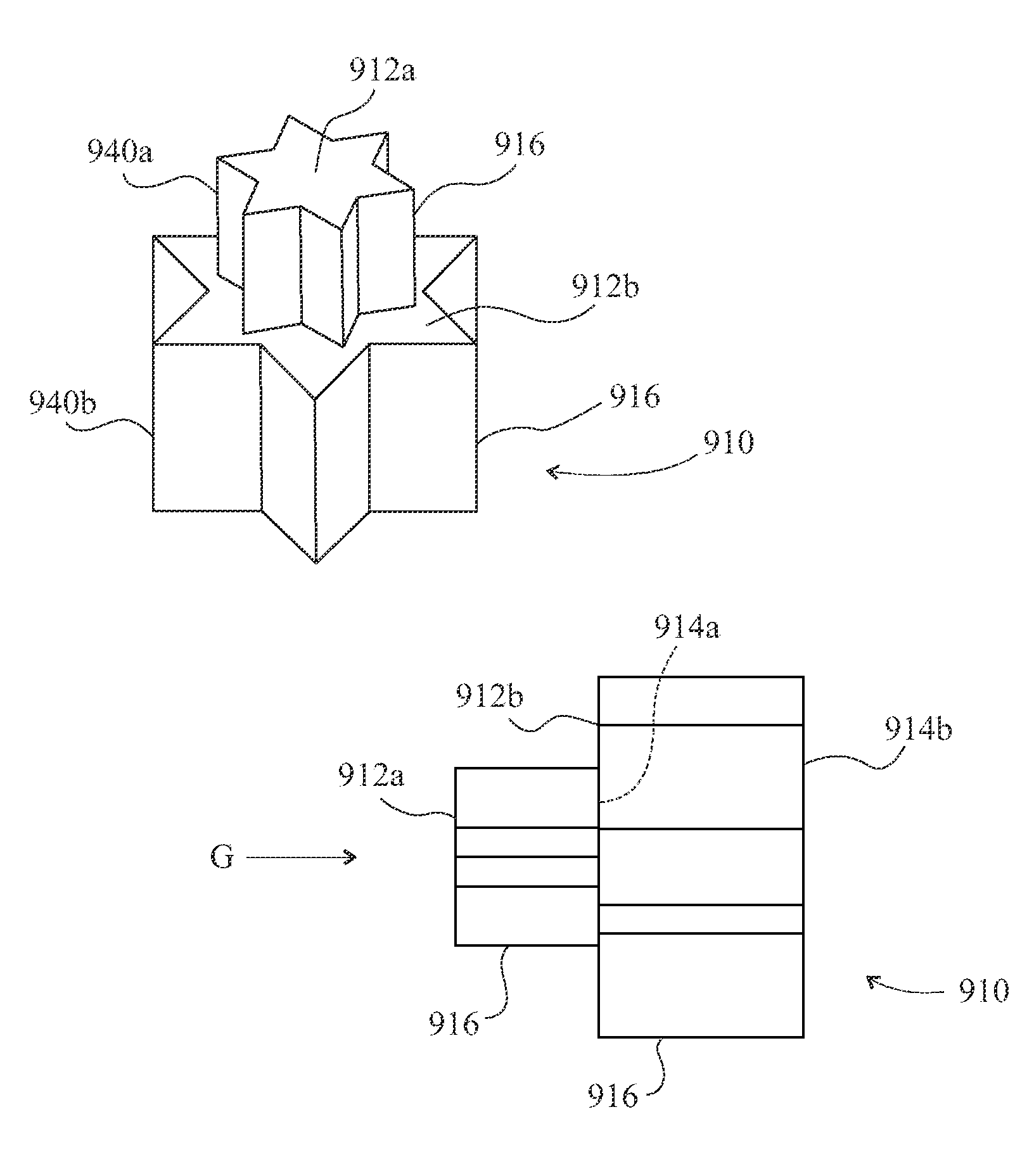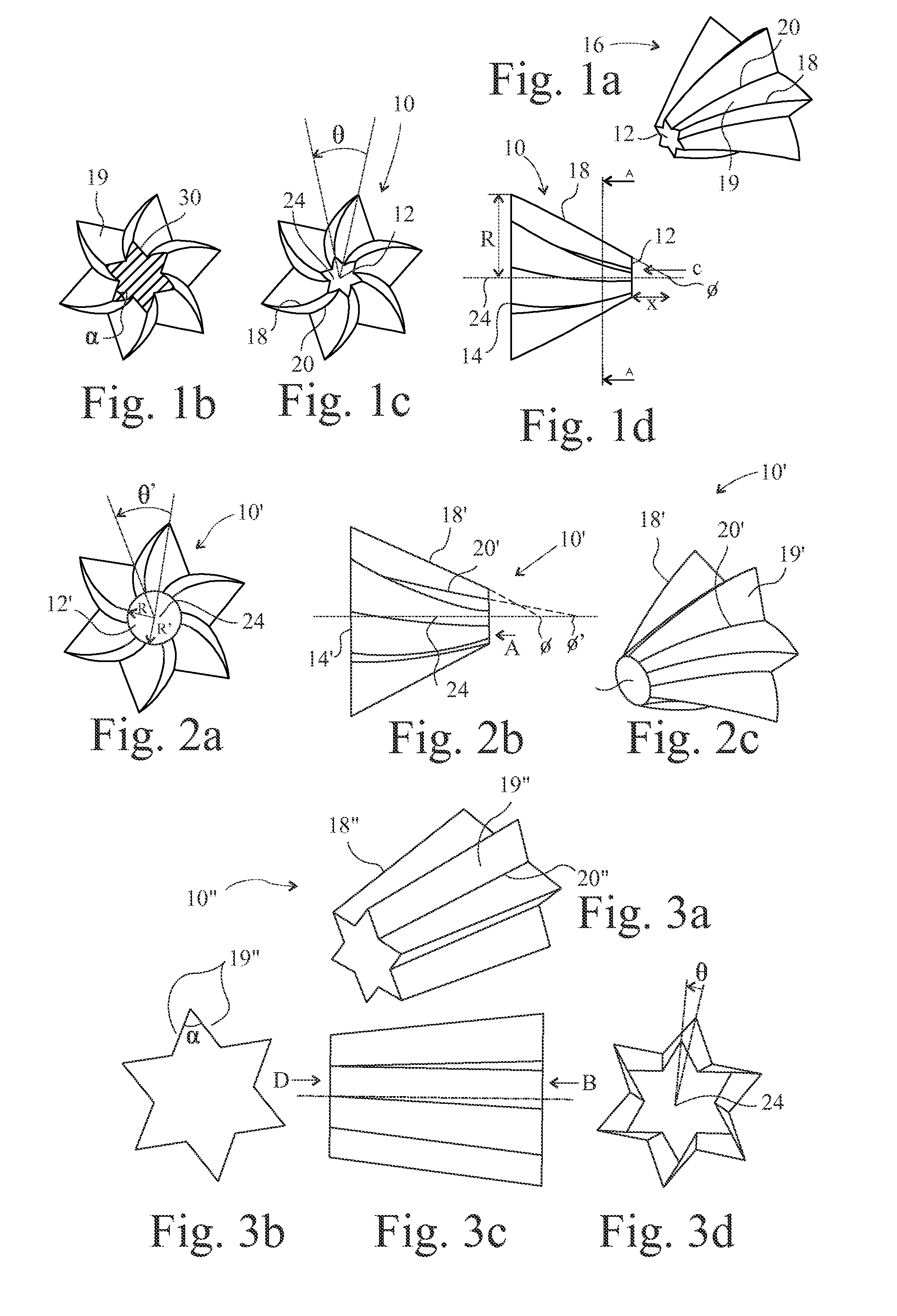Cutting tool inserts
a technology of cutting tool and insert, which is applied in the direction of earthwork drilling, well accessories, drilling/welling, etc., can solve the problems of affecting the cutting accuracy of the cutting tool, the cutting insert and the blade etc. on which they are mounted wear rapidly, and the potential for problems such as the inability to remove the cuttings
- Summary
- Abstract
- Description
- Claims
- Application Information
AI Technical Summary
Benefits of technology
Problems solved by technology
Method used
Image
Examples
Embodiment Construction
[0044]Referring now to FIG. 1, an insert 10 is illustrated comprising end faces 12 and 14, and flanks 16 consisting of ridges 18 separated by troughs 20, forming faces 19 between them. The insert 10 has an axis 24 extending between the end faces 12,14, which are shown as being flat faces perpendicular to the axis 24, although either face may be concaved, convex or faceted, internally or externally, or inclined with respect to the axis 24. A section taken perpendicular to the axis 24, such as the section A-A, has a regular six pointed star shape profile 30 that is the same from the small end 12 to the large end 14. The angle between faces 19 is α, which typically is 60°. However, the ridges 18, and corresponding troughs 20, spiral about the axis 24 between the ends 14 and 12. Thus, the ridges both taper and spiral between the ends 12,14.
[0045]The degree of taper is, in the case of FIG. 1, non-linear. That is to say, the radial distance R of the ridge 18 from the axis 24 decreases at ...
PUM
 Login to View More
Login to View More Abstract
Description
Claims
Application Information
 Login to View More
Login to View More - R&D
- Intellectual Property
- Life Sciences
- Materials
- Tech Scout
- Unparalleled Data Quality
- Higher Quality Content
- 60% Fewer Hallucinations
Browse by: Latest US Patents, China's latest patents, Technical Efficacy Thesaurus, Application Domain, Technology Topic, Popular Technical Reports.
© 2025 PatSnap. All rights reserved.Legal|Privacy policy|Modern Slavery Act Transparency Statement|Sitemap|About US| Contact US: help@patsnap.com



